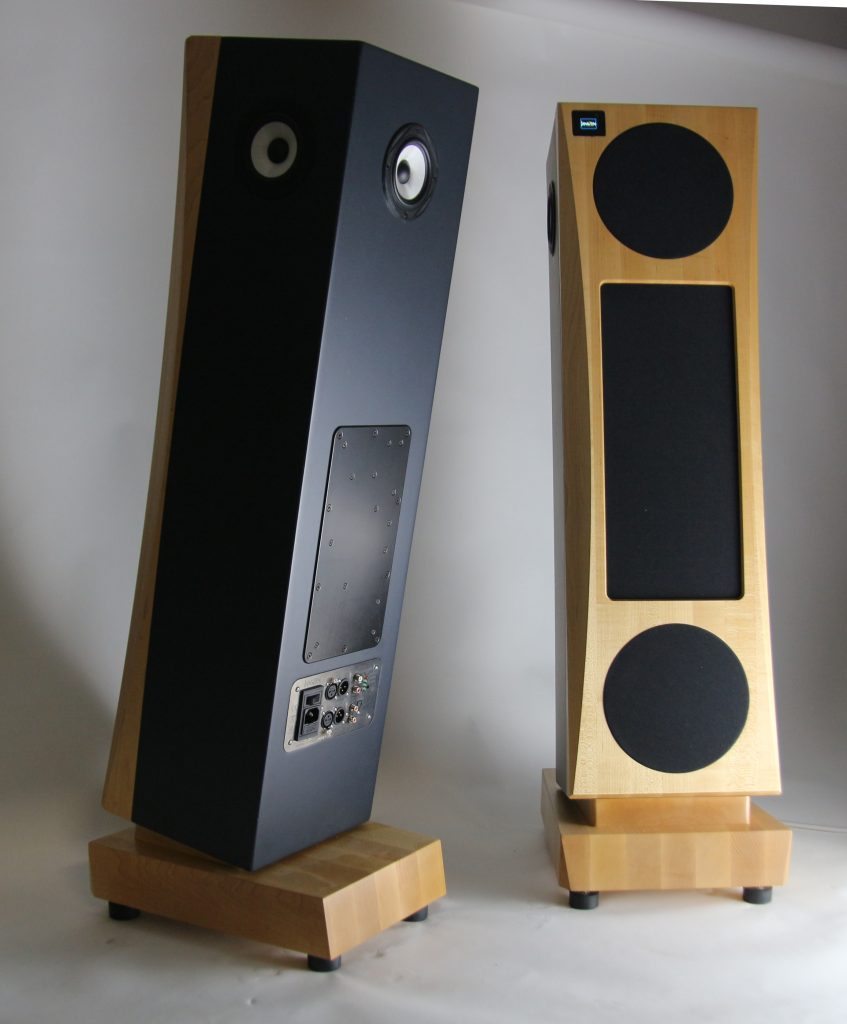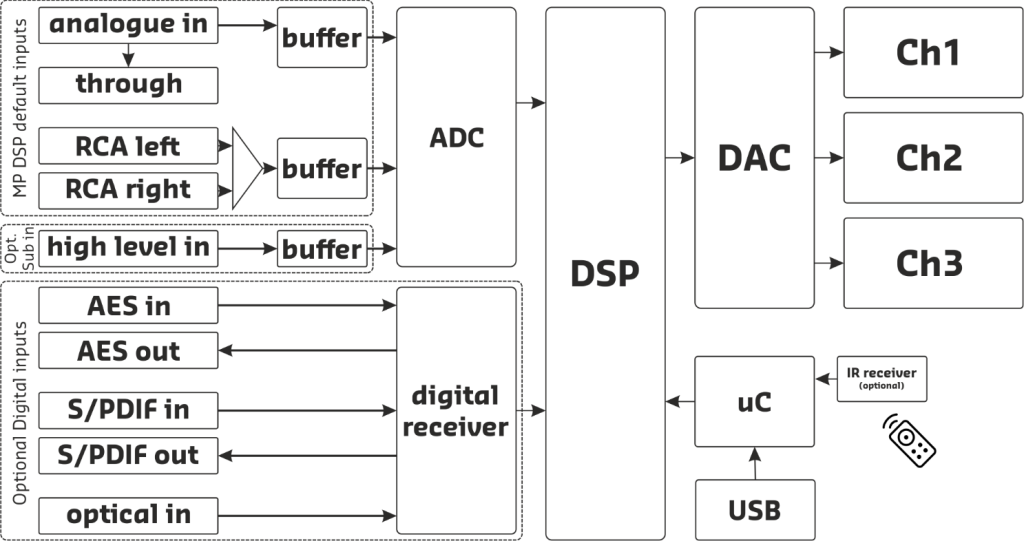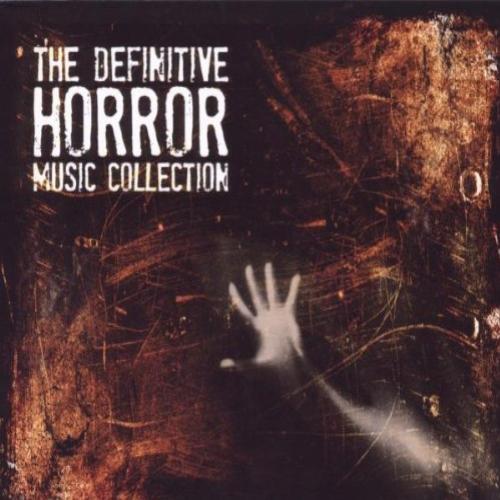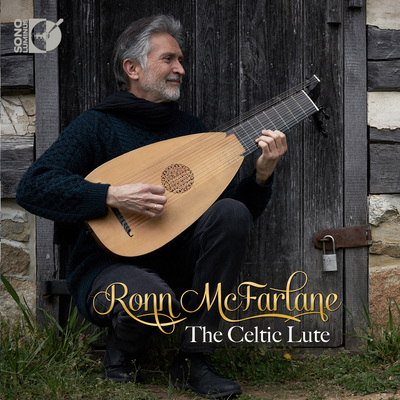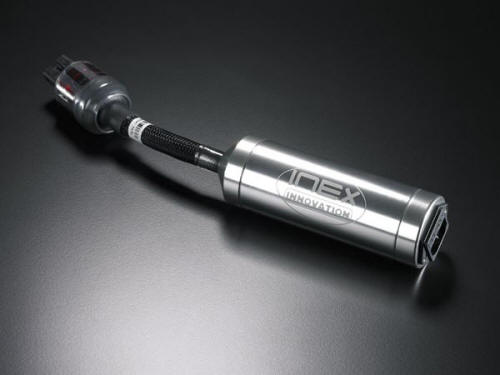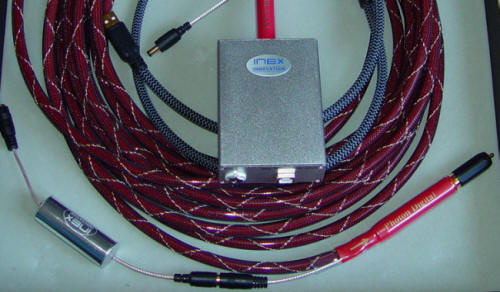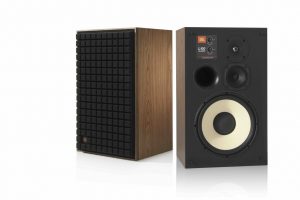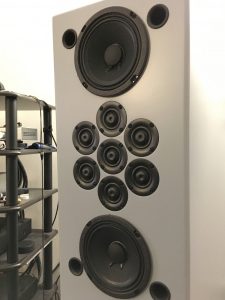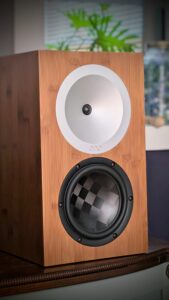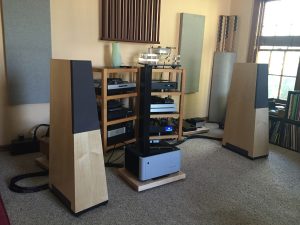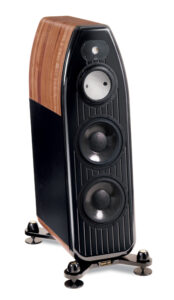The JansZen A8-SE Loudspeaker
JansZen Laboratory was founded in the 1950s when Arthur Janszen developed the first practical electrostatic loudspeaker. The company, currently called JansZen Audio, is run by his son David, who has continued the research and development culminating in the Valentina A8. The Valentina A8 is a complete audio system containing DAC, ADC, amps, crossover, remote control, and WiFi receiver. To set up the loudspeakers, all you need is your cell phone (Android or Apple). After setup, you can stream the music from your phone using TIDAL, Qobuz, Spotify, Apple Music, Google, Amazon, or any of the other streaming services. You can also stream from a Roon core or your computer (Windows, Apple, Linux) running Roon in addition to your phone or as the sole source of your music. The only criteria for using your computer are that the computer has to be connected to the same WiFi system that the Valentina speakers are connected to and that your WiFi operates on the 2.4G band.
Connecting the speakers to your WiFi system is done by downloading a free AudioEngine app which is used one time and can be deleted after connecting the speakers to your WiFi. The computer connection to your LAN can be Ethernet (wired) as well as by WiFi. I had my computer connected via Ethernet to my Ubiquiti household WiFi broadcast unit and used both Roon and JRiver as the music server software. One of my friends who came over to listen used his phone to stream TIDAL to the speakers.
The speakers are controlled by a handheld remote control which manages the volume, selects which input source is desired, and selects the speaker's operational presets. When there is more than on source connected, the speaker can be set to automatically select whichever input source is presently active, or the sources can be selected explicitly using the remote. The available inputs are:
Analog
- RCA (single-ended)
- XLR (balanced)
Digital
- RCA S/PDIF
- XLR AES3 (balanced studio S/PDIF)
- Optical S/PDIF (TOSLINK) - a USB to TOSLINK converter box and TOSLINK cable is included with the speakers if needed by the customer
The review pair included an extra that imparts selectable omnidirectional operation, called the SE (Stereo Everywhere) option. It comprises three full range drivers, one mounted on each side and one on the rear of each speaker, all located near the top. These three drivers add the ambiance and image stability of an omni speaker, but with a time delay that avoids most of the usual image smear of an omni. There's also compensating equalization of the direct sound that avoids creating undue brightness from the indirect sound. These drivers are controlled by three preset buttons on the remote control. The preset buttons do the following:
Preset 1 – direct sound only
Preset 2 – moderate addition of indirect sound for small to medium sized rooms
Preset 3 – substantial indirect sound for larger rooms or to taste
For a thorough discussion of the reasons behind these tweeters please see https://JansZenaudio.com/pages/option-sound-everywhere.
The placement of the speakers and the listening chair in your listening room is very important. Poor placement and attention to detail in toe-in angle and speaker tilt will significantly degrade the sound quality of these speakers. The best listening position, per the owner's manual and my own experience, is a roughly eight foot equilateral triangle.
As mentioned in the owner's manual, the distance from the speakers to the listening chair can be greater than the distance between the speakers, but not shorter. The speakers should be aimed so that the focused direct sound (20° dispersion at 10kHz) being emitted by the electrostatic panels is aimed to cross at a space two feet behind your head.
Aside from the proper toe-in, you also must adjust the back-tilt of the speakers so that the sound from each speaker is aimed within a few degrees of your ear height. To get the toe-in and tilt correct you can use an RTA, or alternatively, a mirror and a simple procedure described in the owner's guide.
Although the suggested setup process is to hang or tape a small pocket mirror centered on the rectangular grill and 4" above its bottom edge, and setting the toe-in and back-tilt so that I could see my same-sided ear in the mirror, I had no such mirror. Fortunately for me, I found a 1 foot by 4-foot lightweight mirror in the sewing room. Each time the speakers were in a new position, I would place the mirror flush with the front of each speaker and rotate the speaker so that when looking at the mirror from my listening chair, my head was on the inside half of the mirror rather than in the middle.
In setting the proper tilt, I adjusted the speakers so that my ears in the mirror appeared level with the midpoint of the electrostatic panels. In retrospect, this led to a less than ideal amount of tilt, but it worked out alright, nonetheless. Since I could not clearly see the black bar that separates the two electrostatic panels through the black grill cloth, I placed a small piece of blue masking tape on the outside edge of each speaker at the midpoint between the two electrostatic panels. The tilt adjustment is made via the speaker's four adjustable screw feet.
My acoustically treated sound room is 15.5 by 14.5 feet in length and width. I and a friend waltzed these speakers around for most of a day without finding the sweet spot that yielded a fairly flat frequency response curve and which also allowed these speakers to sound their best. In retrospect, this was probably because I modified setup procedure, and didn't ask the manufacturer it, but ultimately, all was well.
For several days thereafter, I continued to move the speakers. I got so frustrated at one point that I removed my three equipment stands and all of my equipment except the Valentina's and my computer from the room leaving the room bare except for a sofa (placed off to the side for high frequency sound absorption), my listening chair, and another chair off to the side of the room. I tried the speakers against the long wall, against the short wall and with one speaker on each wall firing diagonally down the room. Adding to the difficulty was that the distance from the back wall and side wall had a direct effect how each of the three presets sounded.
Eventually, I found a placement where the speakers sounded great with all three presets. The speakers were centered on the long wall forming an eight foot equilateral triangle with the listening chair, three feet from the back wall, and 42 inches from the side walls.
I took a frequency response measurement at this final speaker position as I had done at several of the prior positions. My frequency response curve of my final speaker position did not look too different from the frequency response curves from the previous positions. This was probably because I had the tilt set incorrectly, but this wasn't the time to change my approach. The only noticeable difference between the graphs was that the center of the low frequency dip would move from 80Hz to 63Hz and back due to room reflections. A frequency response curve did not tell me where the best position was for placing the speakers. Only my ears could tell me. Once you find the sweet spot you will know it.
While I was moving the speakers around the room, I did find a position where preset #1 sounded excellent. Needing a break, I invited my listening panel to come over to hear the new speakers. My listening panel consisted of four people. Three of the panel are diehard audiophiles all of whom have been to many audio shows over the years and all have very good audio systems. The fourth person is a recording engineer.
The five of us sat around the kitchen table upstairs talking while one by one each of them went downstairs to the listening room and played music that they had brought with them or they played tracks off of my computer that they were familiar with or both. Most of them spent about 20 minutes listening. Then with the critical listening over several went down stairs just to listen for fun.
Considering how loud the music sounded upstairs I can only imagine the decibel level down where they were. A good time was had by all. Before the frivolities started, I asked each one for their thoughts about what they had heard. The three audiophiles all said that these were great speakers, that they seemed to do everything right, and that they could not detect any real flaws.
Everyone did comment about the bass. Everyone thought the bass went very low and sounded really good. However, while the bass went low enough and sounded as bass should sound, there was no visceral impact. When the big bass drum was whacked the bass sounded wonderful, but there was no pressure wave hitting the chest. Two eight-inch woofers per side can only do so much. If you want bass pressure waves you need to have lots of woofers including some big ones.
While exchanging emails with David Janszen I mention the lack of bass chest slam and that the speakers would need some woofer towers to augment the bass and create the missing visceral impact. David said that he has been working on just that. In that email he included a photo of the prototype Valentinas with larger electrostatic panels and six 8" woofers per side. These larger speakers would definitely be more costly.
I suggested to David in a follow-up email that for those with smaller rooms and smaller audio budgets he should consider having a low frequency (LF) mono analog output on the back of the Valentinas for connecting a subwoofer. David replied that adding a sub-out connection to the speakers would not be that difficult.
When the recording engineer went down for his listening session, he asked me to go with him to help him load the music he had brought with him onto my computer. The music that he brought had been recently recorded by him in a studio. The recording was of a locally known singer/guitar player. The recording engineer had just finished mastering the four tracks that he had brought with him. He played all four tracks without a break and said nothing.
When the last note sounded, he uttered a very loud "WOW." He then said, paraphrasing his words, that the music from the speakers sounded very close to what he heard with his headphones and that he had never heard speakers that could do that.
Once I had put the Valentinas into their final position I started to do my own critical listening. I have both a test CD and USB flash drive with identical music that I have taken around at the audio shows for the years. I have heard this music played on many different loud speakers and I know how these tracks sound in different rooms with different equipment. I listened to the tracks multiple times over a number of listening sessions taking notes. Below is a brief summary of my notes for a number of the tracks.
Female vocalists
Soprano with Orchestra
"Concerto in e minor for Soprano and Orchestra" from the movie The Double Life of Veronique, included in the European Film Music Collection box set issued by Silva Screen.
The music was recorded in a large hall. The soprano was recessed on the stage with the orchestra behind her. Her voice was clear with every syllable clearly delineated. Very life like. The eeriness of the music was clearly conveyed by her voice.
Soprano with Orchestra
"Ebben Ne Andro Lontano" from the opera La Wally from the French movie Diva, included in the European Film Music Collection box set issued by Silva Screen.
Recorded with the soprano close to the front of the stage in front of the orchestra. A thrilling performance. I usually don't listen to opera. However, I found this performance riveting. The soprano was so real and the music so emotional. I had never heard this track sound like this in any of the many rooms at the audio shows in which I have played it.
Male Vocalists
Izzy Kamakawiwo'ole singing "White Sandy Beach of Hawaii' from his Facing Future album.
Everyone has heard this. It has been used in TV commercials and other advertising formats. A simple song sung by an extraordinary voice. Despite having heard Izzy sing this song on numerous High End systems, all of which sounded very good to excellent, none brought me as close to having Izzy singing right in front of me. Of course, he wasn't. This is just a recording. Still, it was the next best thing that I have heard.
Small Instrumental Group
"The Grindhouse Blues" from the soundtrack of the movie Planet Terror.
The music group consists of an acoustic guitar, electric guitar, bass, drums, and sax playing the blues. It is a studio recording so there is no real sound stage. The instruments are recorded up close. You can hear every nuance such as the fingers sliding on the strings of the acoustic guitar. On really good audio systems this music makes you feel like you are in the recording studio hearing each instrument being recorded. The Valentinas reproduce that 'You Are There' feeling.
Individual Acoustic Instruments
Cello
Title track from the movie Fort Saganne, included in the European Film Music Collection box set issued by Silva Screen.
The cello is in front of the orchestra and plays solo much of the time. The deep rich sound of the cello in its lowest register takes me back to memories of hearing cello concertos at orchestral concerts. Very life like and the upper registers sound equally as good.
Picolo Trumpet with Orchestra
"Grand Choral" from the movie Day for Night, included in the European Film Music Collection box set issued by Silva Screen.
If you have never heard a piccolo trumpet played at full volume in its high register you probably have never experienced a pure musical sound piercing your head. At audio shows in the late 90s to early 2000s the entrance of this piercing sound could not be reproduced by some very expensive systems. The sound would just congeal. Most current audio systems can reproduce these loud, shrill high notes. Still, it is a good test of how a system handles loud high frequencies. The Valentinas reproduced the sound with ear splitting accuracy and tonality.
Violin
"Noah Returns" track from the movie soundtrack of The Village, Hillary Hahn soloist.
This is the music of the Lost Soul which floats and drifts over the scene. Very melodic and haunting music. I have a number of Hillary Hahn's recordings and have heard her in the concert hall. This is a wonderful reminder of how talented she is. A great recording of a violin and a very realistic sound heard through the Valentinas.
Full Orchestra
"Transylvania 1887" and "Final Battle" tracks from the soundtrack of the movie Van Helsing.
If you want loud, bombastic music with heavy use of the bass drum this is your music. In both tracks the tympani and the bass drum, especially, are used frequently and to great impact. The sound of the tympany and bass drum in these tracks reminds me of what I have heard in the concert halls over the years. Great bass. However, as mentioned above there is no sound pressure wave hitting your chest. The, hopefully, forthcoming woofer towers or sub will provide that.
Electronic
Inner Universe, soundtrack from the anime series Ghost in the Shell: SAC with vocals by Origa.
This is electronic music with a multitude of sounds, tones and special effects all happening simultaneously over which rides the female voice. This is very complex music with all sorts of sounds appearing at an extremely rapid pace and at high volume. Again, some loud speakers of the past did not handle this complex signal very well. The Valentinas did an excellent job of showing each of the individual sounds that make up the whole. I don't remember hearing any loud speakers at the various audio shows that sounded better than this.
I did spend time listening to the three presets and doing quick A-B-A comparisons between them. The fact that you can press the desired preset button and have the new preset engage in a second makes comparisons easy.
My take-away is that the presets help most on studio recordings and recordings of synthetic music (music assembled out of sound bites from a sound library). Well-recorded live music, whether classical, jazz, vocal, etc. does not need to be '"enhanced." However, for studio recordings or music recorded from synthesizers or sound libraries that have no soundstage, the addition of ambiance around the music could, for me, sometimes add a quasi-3D effect. As I moved from Preset 1 to Preset 2 to Preset 3 there was more air around the sound. However, if Preset 1 had a distinct image of the instrument, ensemble or orchestra Preset 2 diffused the image. Preset 3 further diffused the image so that the music was coming at you from a small cloud rather than a distinct location. This makes sense, as Preset 3 is intended for use in much larger rooms.
After much listening to many studio, synthesizer, and sound library recordings, I preferred Preset 2 over Preset 3 about two-thirds of the time. I am sure that how you perceive the benefits of Presets 2 and 3 will depend highly on your own preferences. If I were buying the speakers, I would prefer to have them included since over 35% of my albums are not live recordings.
After playing all of this music and many other albums and tracks over a number of days I am totally impressed by the Valentinas. They performed exceptionally well. I sent an email to David Janszen asking him about the components of the Valentinas and why he thought his speakers sounded so good and he wrote back the following reply:
"The amps are switchers, a.k.a., class D. These are sometimes referred to as digital amps, but that's incorrect. Perhaps a combination of DAC and switching amp might be more accurately called a digital amp, but that's not quite correct, either.
Really, a digital amp is a power DAC, where the digital words directly control the amp's voltage; I believe this approach is fraught with drawbacks.
The switching amps in the speakers take an analog signal in the usual way and amplify it. They just happen to switch the output devices at radio frequencies, rather than running them slowly through their linear conduction region. This crosses the push-pull output stage through the crossover point so quickly that there is no crossover distortion. (Crossover in this case refers to the hand off in the amp's output stage between the upper and lower legs of the push-pull output pair.) This is the same advantage that a class A amplifier has, but at a small fraction of the power consumption.
- All signal processing, including the crossover, is done digitally (a.k.a., in DSP). Thus, the analog inputs must be digitized to be processed by the DSP.
Having the ADC and DAC hardware integrated together with each other and with the DSP circuitry makes the digitization and reconstitution quite loss-free, as you no doubt could tell by listening. This is a far cry from where marginally compatible, individual ADC, DAC, and DSP components are strung together by interconnects.
- The digital signals are sent directly to the DSP, thence to the DAC and the amps.
Here's a flowchart diagram of the input and processing hardware. Ch1, Ch2, and Ch3 at the output refer to the three amplifiers. Please ignore the "Opt. Sub in" block, which is not present in the speakers." For clarity, the three amplifiers mentioned in this paragraph refer do the following: 1. Woofer amp, 2. Electrostatic panel amp, and 3. Preset 2 and 3 amp."
That is Mr. Janszen's explanation of why these speakers sound so good. I am in no position to say if this is correct or not. However, no matter how these speakers work, you need to hear these speakers for yourself and come to your own conclusions. I think at $14,700 ($12,750 without the SE option's selectable indirect sound) that they are a bargain, particularly if you do not have enough room or money for bulky separate equipment, don't want long cable runs, or if you would prefer to stream your music directly to the speakers.
Valentina A8 Loudspeakers
Retail: $12,750 ($14,700 as tested)
JansZen Audio
480 Trade Road
Columbus, Ohio 43204
614.448.1811
Photograph and diagram courtesy of JansZen Audio.




